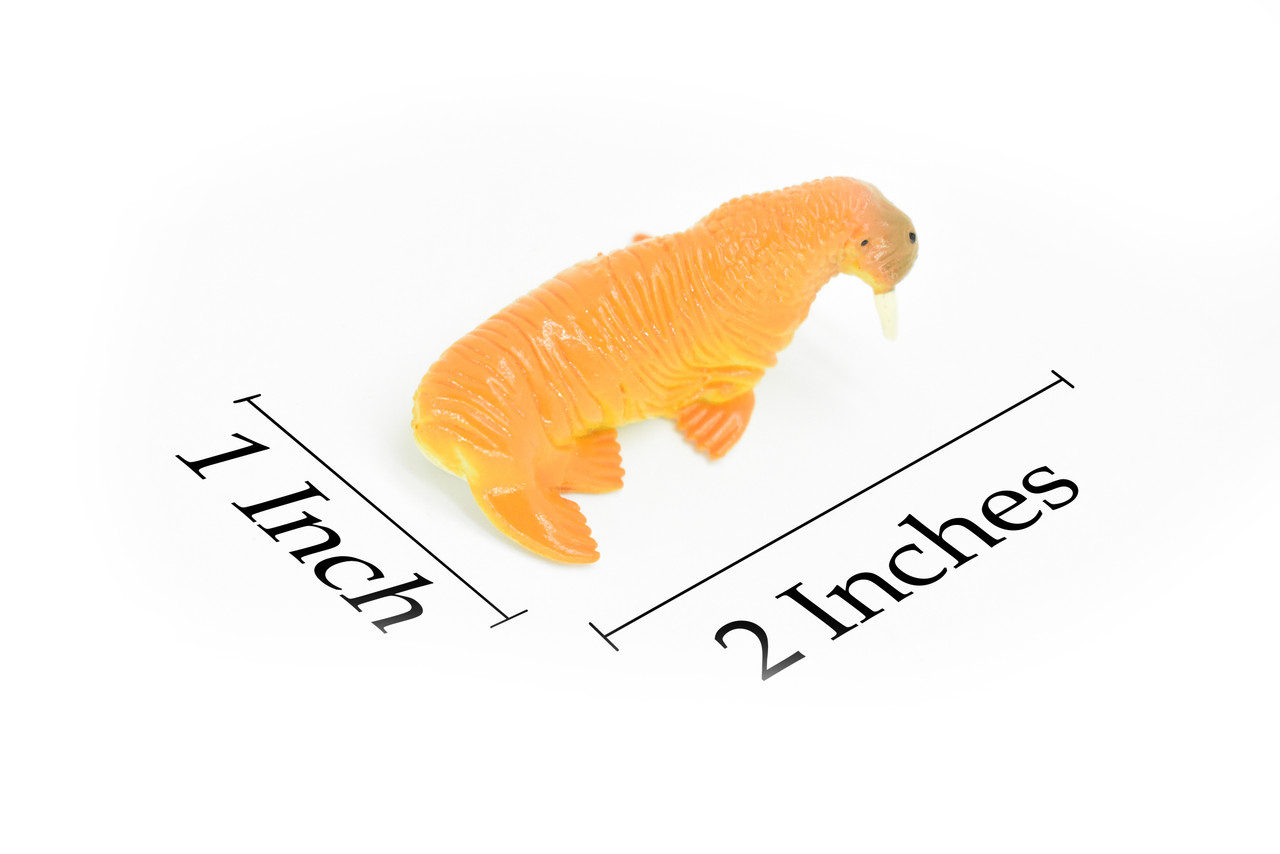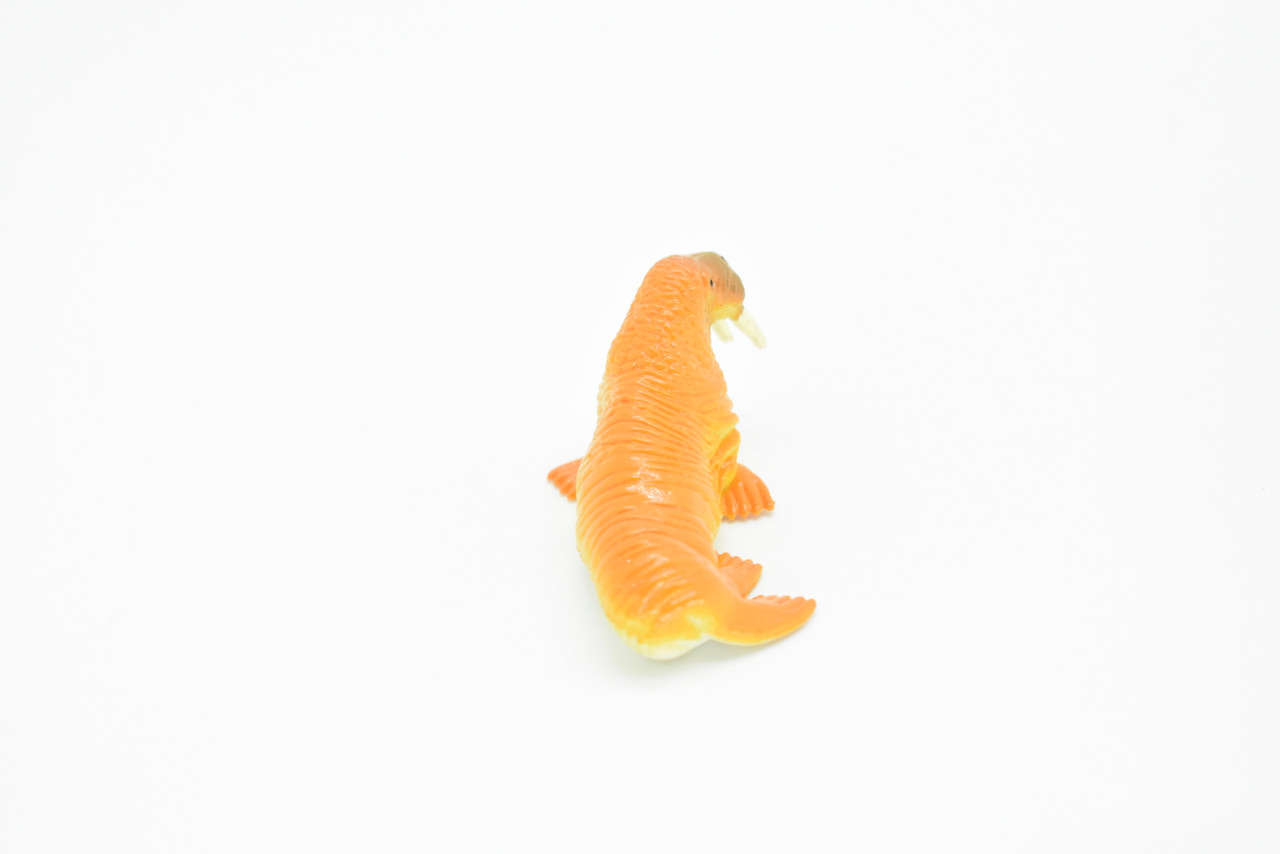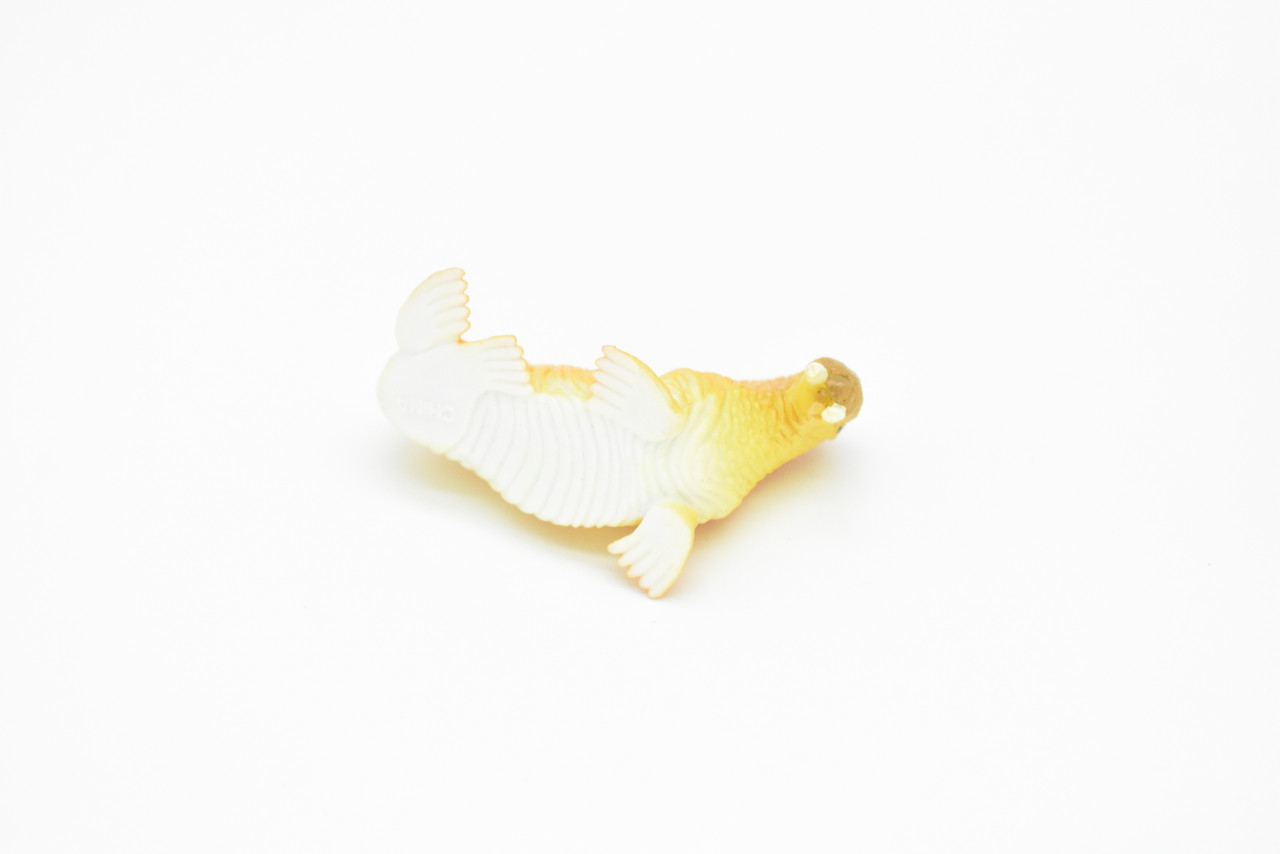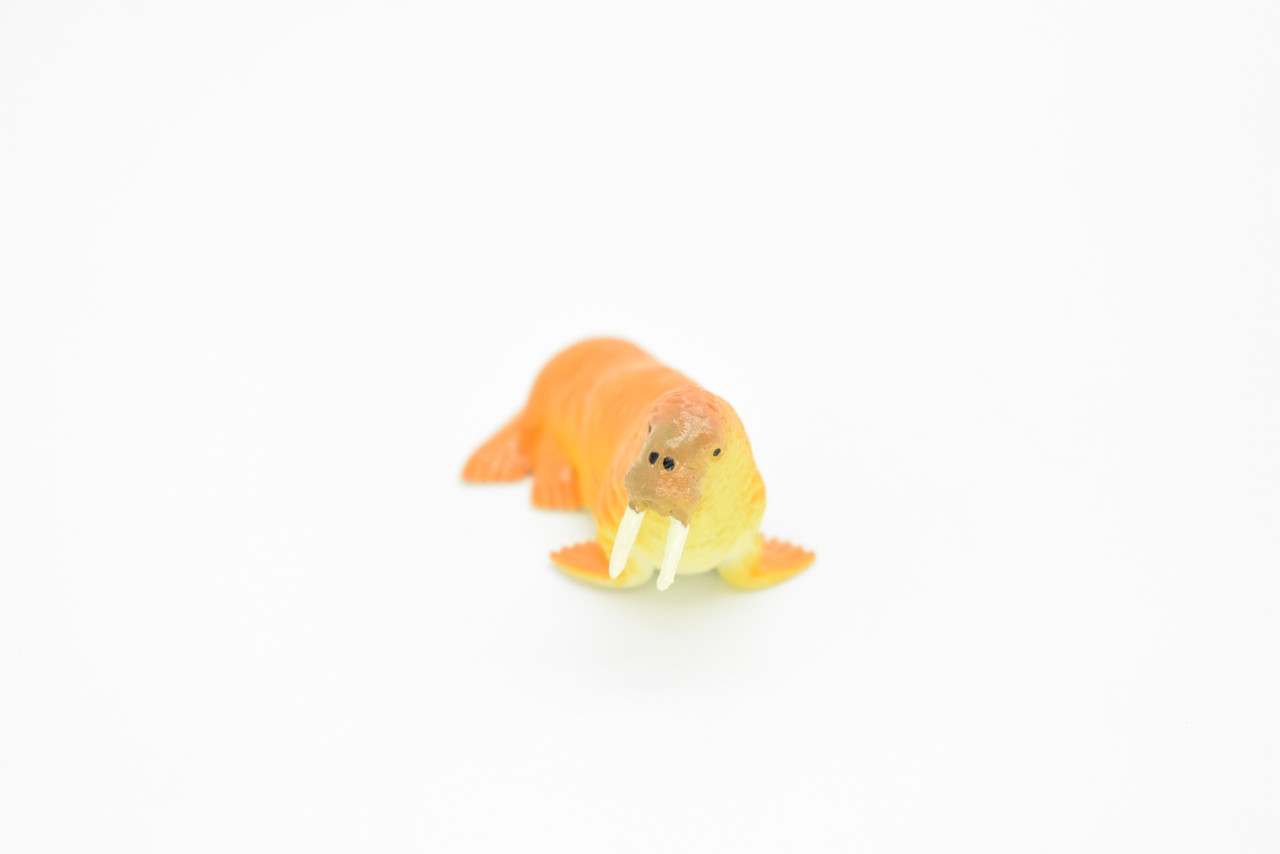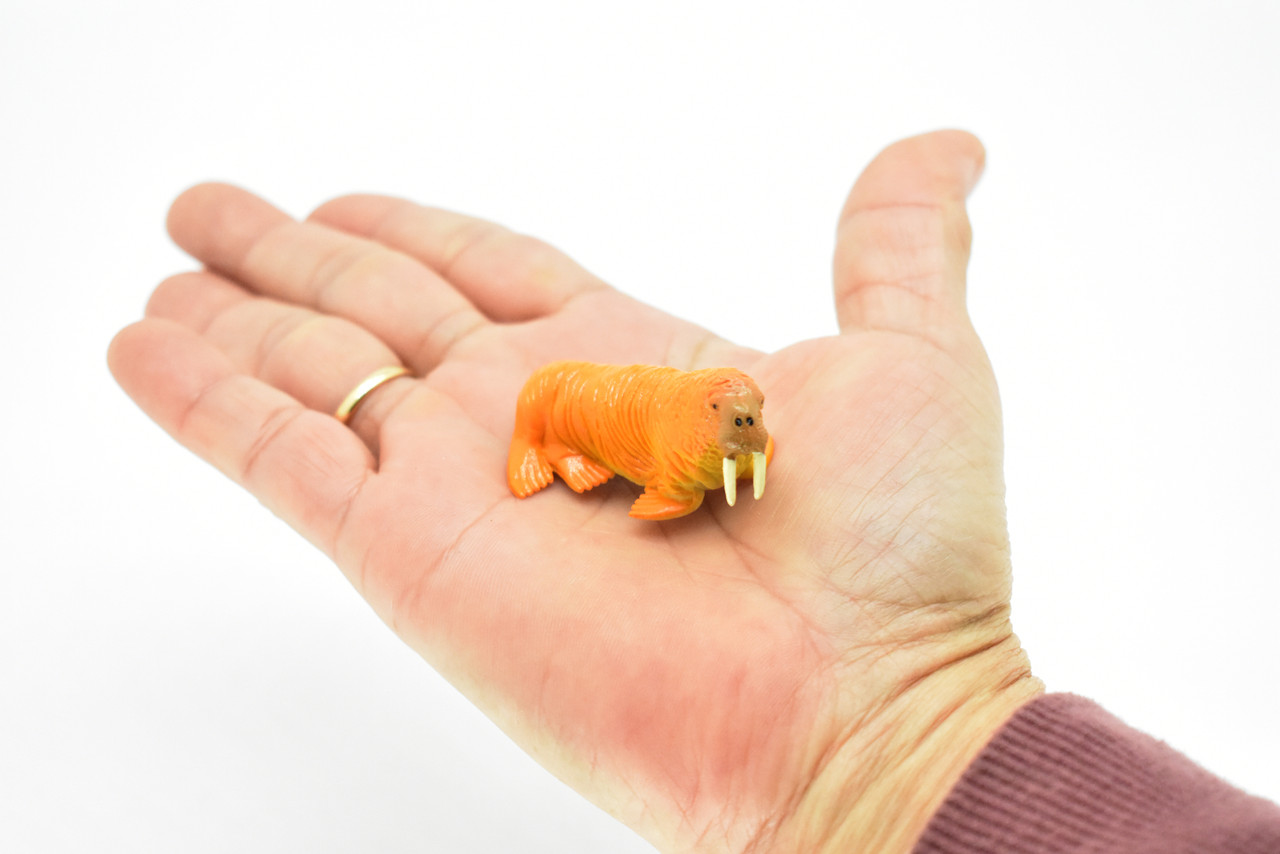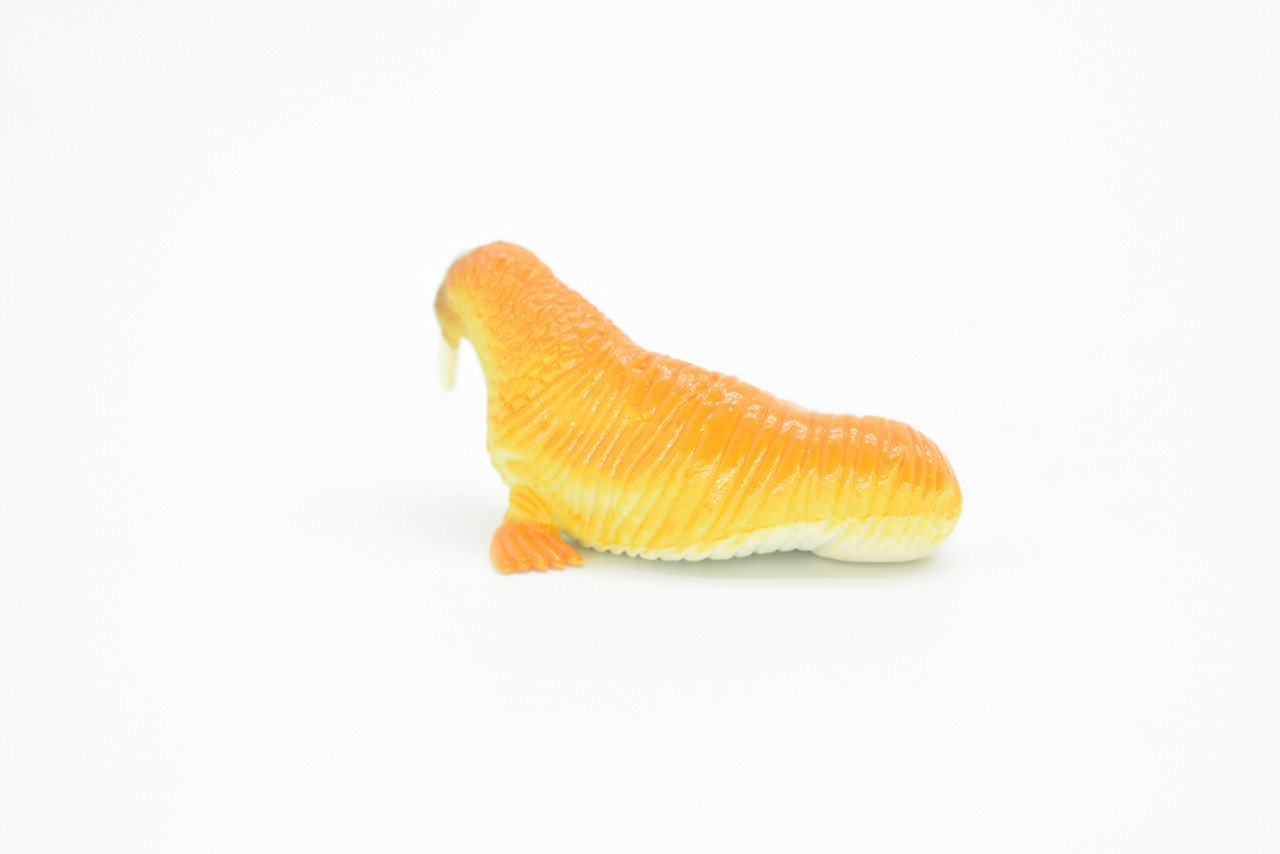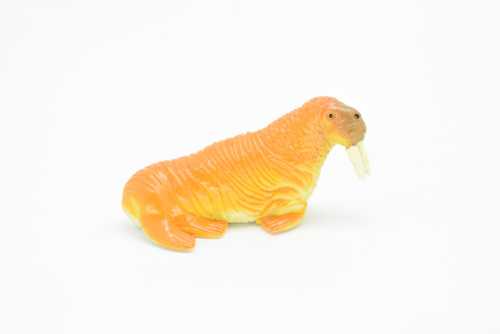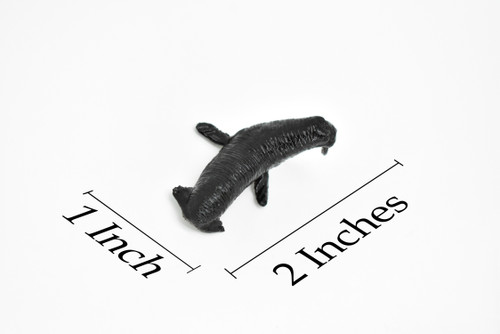Product Description
Our Small Plastic Walrus Our walrus is made of hard plastic and measures 2 inches long. This plastic walrus is great for school projects, toys, novelties, animal collections, party favors and more. Our plastic walrus is for decoration or play only. It does not float, and should NOT be put in your aquarium. However, you can make a terrific arctic sea-life or aquarium shoebox diorama using this and other plastic aquatic creatures and mammals, sharks, fish, sea turtles, birds, and decor from our gift shop. Be sure to check out our other walrus toys and gifts.
About Walruses Physical description: Walruses are characterized by their large size, 4 flippers, tusks and numerous vibrissae. The Pacific walrus is slightly larger than the Atlantic walrus. Male Pacific walruses weigh about 1,764-3,748 lbs and are about 9-12 ft long. Female Pacific walruses weigh about 882-2,756 lbs and are about 7.5-10 ft long. Atlantic walruses are slightly smaller: males weigh about 2,000 lbs and reach lengths of 9.5 ft. Females weigh about 1,750 lbs and reach lengths of 8 ft. Generally, walruses are cinnamon-brown overall. Walruses appear quite pale in the water; after a sustained period in very cold water, they may appear almost white. They are pink in warm weather when tiny blood vessels in the skin dilate and circulation increases. Calves at birth are ashen gray to brown. Within a week or two, calves become tawny-brown. The coloration pales with age. In general, younger individuals are darkest. Habitat: You will find the walrus living in areas where it is very cold. They are found in the Arctic Ocean as well as the sub Arctic regions. The walrus will spend most of its time in the waters and rocky islands, headlands, or ice floes of the Arctic Ocean. A single word describing walrus habitat would be "circumpolar." There are two main groups of walruses, all found in the Arctic Ocean (there are no walruses in Antarctica). The Pacific walrus is found in the Bering Sea between Alaska and Russia, along the northern coast of Alaska, and along the Chukchi Sea and the northern coast of Russia and Siberia. The Atlantic walrus is found in the Arctic regions of eastern Canada and along the northern coastlines of Greenland. The walrus likes it on the somewhat cool side, where the air temperature ranges from the single digits to about 40 degrees Fahrenheit. Walruses spend most of their time in the water, though they seldom if ever venture out into the deep ocean, preferring water that is no more than a couple hundred feet deep. Given the choice between dry land and an ice floe, the walrus will invariably choose the latter, and some times migrate from place to place by hitching a ride on an ice floe or drifting along with the pack ice, rather than by swimming. Diet: Due to the overwhelming size of the walrus it is no surprise that they consume very large amounts of food. Because visibility is poor in deep and murky waters, walruses rely on their vibrissae (whiskers) to locate food. Walrus prefer mollusks, mainly bivalves such as clams. The suck bivalve animals from the shells. Walruses also eat many other kinds of benthic invertebrates including worms, gastropods, cephalopods, crustaceans sea cucumbers, and other soft-bodied animals.


